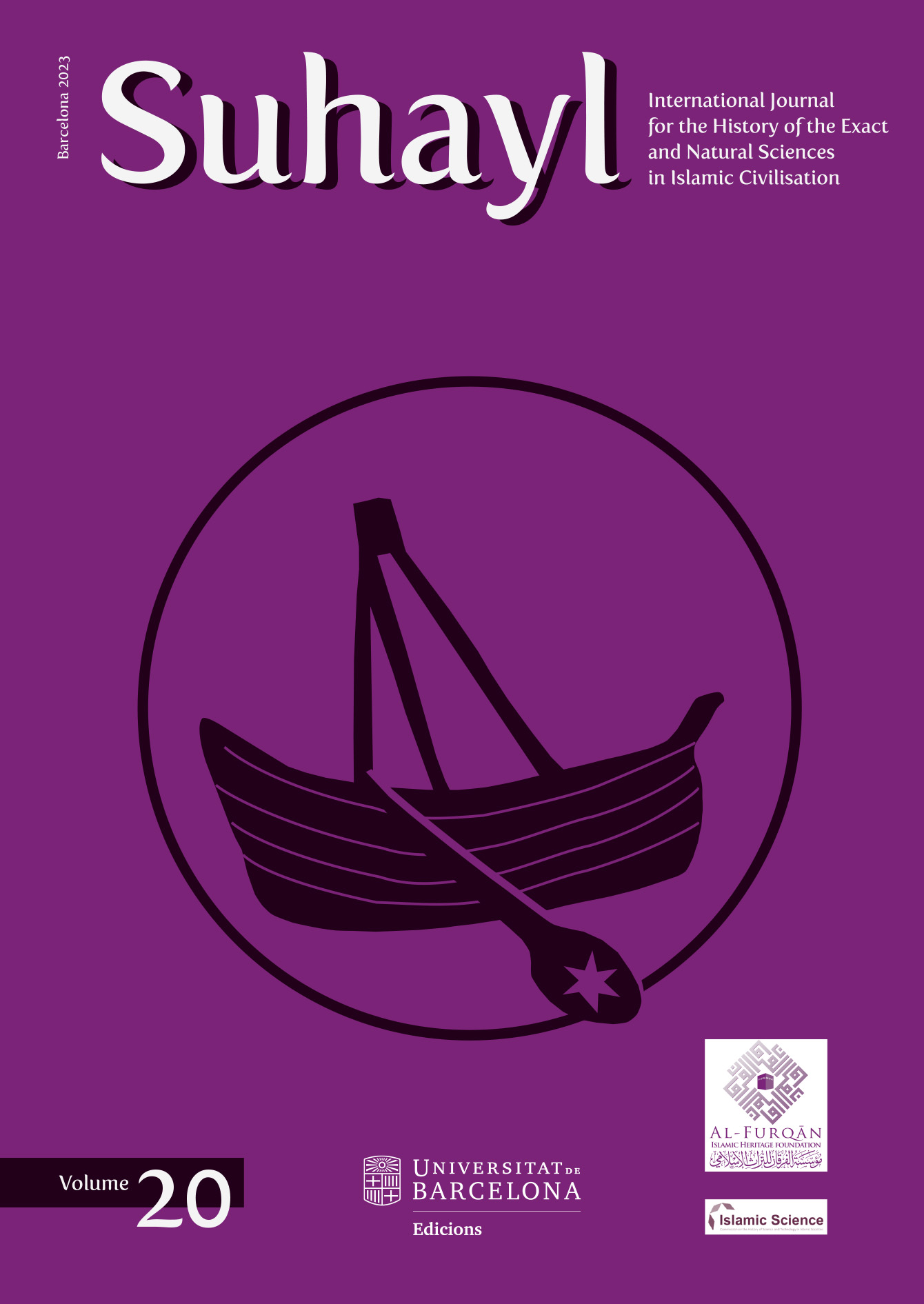Sources of the Planetary Theories in Fahhād’s ῾Alā᾽ī zīj: Solving a Medieval Case of Intellectual Fraud
Article Sidebar

Main Article Content
According to the anonymous 13th-century Shāmil zīj, Abu ᾽l-wafā᾽ al- Būzjānī’s (10 June 940–after 25 May 997) planetary theories were adopted in Ibn al- Fahhād’s 12th-century ῾Alā᾽ī zīj without acknowledgement. This puzzling case of plagiarism, noted by the late Prof. E. S. Kennedy in 1956, is solved by means of a graphical approach, together with some astronomical analysis, in order to (A) visualize the perplexing network of the development of planetary theories in medieval Islam and (B) distinguish the types of relations existing between them. The paper describes the new strategies invented in the Islamic period to modify the available planetary theories in order to reconcile them with the observations, called istidrāk and i῾tibār, which were different from the standard methods set forth in the Almagest. The accusations of fraud are shown to be unfounded. It is shown that Ibn al-Fahhād’s solar and lunar theories and his precessional rate of 1°/66y are taken from the Mumtaḥan tradition; his theories of Jupiter and Saturn were the results of his modifications of ῾Abd al-Raḥmān al-Khāzinī’s corresponding theories in the Mu῾tabar zīj (1121 ce) on the basis of the results he achieved from his observations; his theory of Mars was constructed on the basis of his observations, independent of any other available theory; and his theory of Venus is taken directly and faithfully from Khāzinī.
Article Details
(c) Suhayl. International Journal for the History of the Exact and Natural Sciences in Islamic Civilisation, 2023
Copyright
Suhayl. International Journal for the History of the Exact and Natural Sciences in Islamic Civilisation està subjecta a una llicència Creative Commons 3.0 de Reconeixement - No Comercial - Sense Obres Derivades.Most read articles by the same author(s)
- S. Mohammad Mozaffari, Georg Zotti, The Observational Instruments at the Maragha Observatory after AD 1300 , Suhayl. International Journal for the History of the Exact and Natural Sciences in Islamic Civilisation: 2013: Vol.: 12
- S. Mohammad Mozaffari, Muḥyī al-Dīn al-Maghribī’s Measurements of Mars at the Maragha Observatory , Suhayl. International Journal for the History of the Exact and Natural Sciences in Islamic Civilisation: 2018-2019 Vol.: 16-17
- S. Mohammad Mozaffari, Kāshī’s Lunar Measurements , Suhayl. International Journal for the History of the Exact and Natural Sciences in Islamic Civilisation: 2020-2021 Vol.: 18
- S. Mohammad Mozaffari, A Revision of the Star Tables in the Mumtaḥan Zīj , Suhayl. International Journal for the History of the Exact and Natural Sciences in Islamic Civilisation: 2016-2017 Vol.: 15
- S. Mohammad Mozaffari, Georg Zotti, Bīrūnī’s Telescopic-Shape Instrument for Observing the Lunar Crescent , Suhayl. International Journal for the History of the Exact and Natural Sciences in Islamic Civilisation: 2015: Vol.: 14